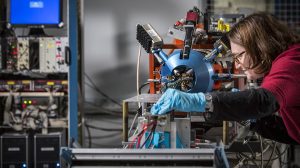In the rapidly changing world of technology, few concepts have generated as much attention as “Artificial Intelligence” (AI). AI has emerged as a topic of both excitement and concern due to its ability to transform all facets of life and human capabilities. In this article, we will set out an analysis to shed some light on the mysterious world of artificial intelligence by investigating its fundamentals, types, applications, and expectations for a bright future.
Unveiling Artificial Intelligence
Artificial intelligence, more generally referred to as AI, involves a range of technological advancements that enable machines to imitate intelligence similar to that of humans. Consider AI as the computer version of human intelligence, capable of anything, from language processing to making decisions on its own. Although AI has been gaining popularity recently, the idea was first proposed by John McCarthy in 1955 as a way to imitate human intellectual powers.
Understanding the AI Spectrum: Types of AI
There is no such thing as AI that works for everyone; it comprises a spectrum of attributes categorized under a few types:

Narrow or Weak AI:
This specific type of AI has wider human-like intelligence and is created for excellence at specific roles. Some examples are:
- Facial recognition software.
- Recommendation algorithms on streaming platforms.
- Voice-controlled assistants like Siri.
- These machines require substantial instruction to excel in their designated fields and perform at a high level of effectiveness.
General or Strong AI:
This kind of AI, often referred to as Artificial General intellect (AGI), aims to have human like intelligence across a variety of jobs. Similar to humans, AGI is able to comprehend, acquire, and often apply information in a variety of circumstances. AGI remains an enormous challenge since it requires machines to display not just specialized knowledge but also creative thinking.
Artificial Super Intelligence (ASI):
ASI refers to machines that are more intelligent and capable than humans at the maximum level of AI complexities. This AI might solve challenging issues, predict results, and even create new scientific hypotheses. Although ASI has enormous potential to improve science and society, it also poses ethical issues and queries regarding the management and administration of such distinguished systems.
The Inner Workings of AI: What is Machine Learning?
Machine Learning, an essential component of AI, plays a major role in allowing machines to learn from data, utilizing the power of statistics and mathematics to identify explained patterns and providing accurate predictions without the need for explicit programming instructions. Machine Learning is a broad study that may be divided into three core branches, each with its particular area and application.

Supervised Learning: Models are trained on labeled data in supervised learning, where inputs are connected to matching outputs. To differentiate between the two species, a supervised learning model, for example, can be trained on pictures of cats and dogs using suitable labels.
Unsupervised Learning: In unsupervised learning, patterns, and structures are found by examining unlabeled data. A typical method is clustering, which gathers data points based on similarities. Unsupervised learning is beneficial when patterns or insights have yet to be discovered.
Reinforcement Learning: This learning method includes programming decision-making models to use penalty systems and incentives. It’s similar to how people learn through making mistakes. Applications like robotics and artificial intelligence for games are particularly useful for reinforcement learning.
AI in Practice: Real-World Applications
Real-world applications of AI cover many fields and have an impact on everyday lives. The huge impact of AI is felt throughout industries, including manufacturing, banking, healthcare, as well as entertainment. In healthcare, AI helps with diagnosis and medication development, while in financing, it helps with fraud detection and market trend forecasting. AI is also used in smart manufacturing to ensure that machines are maintained before they break down.
Ethical Considerations
As AI expands, ethical issues become more important. In order to use AI responsibly, we must use technology to complement our intelligence rather than as a substitute. We must verify the accuracy of AI-generated outputs and select trustworthy technologies that follow privacy and security regulations.

The Road Ahead: Navigating AI's Future
AI brings both potential and difficulties as it advances further. Although there is no questioning that AI can transform sectors and increase efficiency, concerns about job loss and moral consequences continue to exist. In order to determine the future of AI, it will be crucial to strike a balance between innovation and responsible application. By understanding AI’s foundations, capabilities, and limitations, we can create a future in which AI functions for the benefit of humanity.
We have just begun exploring the surface of AI’s sophistication and potential. As AI technology expands, it also impacts our ability to properly utilize it, encourage innovation, and make sure that the machines we build represent the best aspects of human intellectual ability.
Disclaimer: Any opinions expressed in this article do not necessarily reflect the opinions of Gibbous. This content is meant for informational purposes only.







